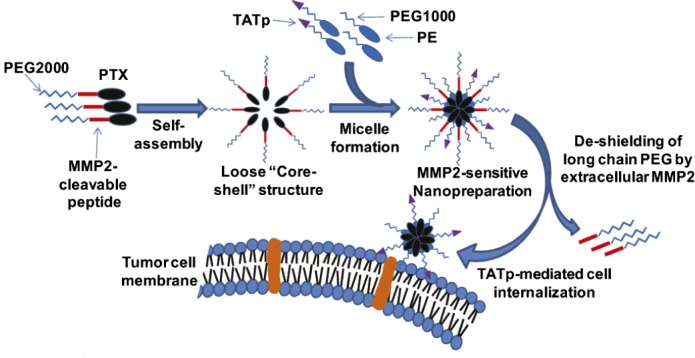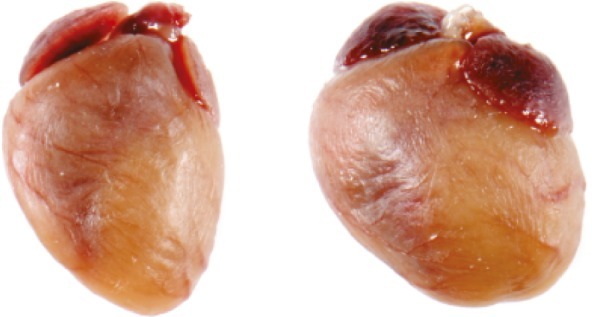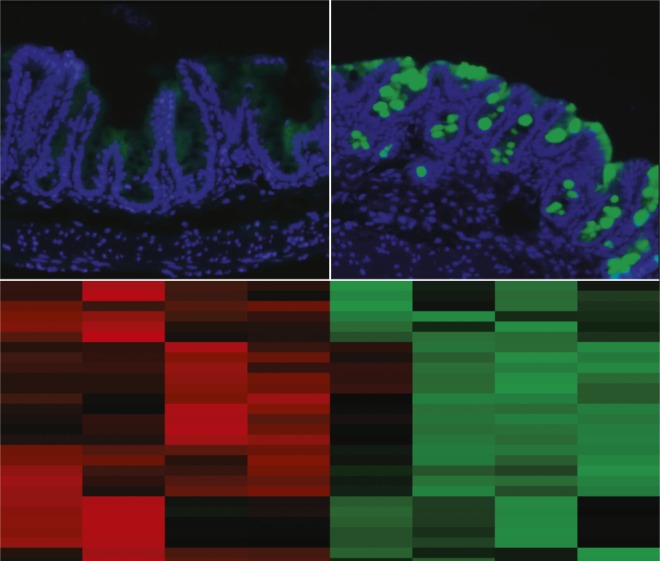Earwax provides insight into whale’s lifetime of exposure to pollutants

Adult blue whale spotted near Newport Canyon off the coast of southern California. Image courtesy of John Calambokidis (Cascadia Research Collective, Olympia, WA).
Many baleen whale species continuously accumulate layers of wax in the ear canal, which is sealed off from the external environment, forming an earplug that remains in place for the whale’s lifespan. Stephen Trumble et al. (pp. 16922–16926) hypothesized that the waxy layers, which can be used in a manner similar to tree rings to roughly estimate a whale’s age, would contain a chronological archive of the fat-soluble chemicals that a whale naturally secretes and is exposed to in the ocean. The authors analyzed the chemicals within each layer of the earplug from a deceased male blue whale, revealing fluctuating levels of testosterone and the stress hormone cortisol during the whale’s 12-year lifespan. The analysis also revealed that the whale had accumulated substantial levels of persistent organic pollutants, such as pesticides and flame retardants, within its first year of life, likely during gestation and/or nursing; by contrast, mercury levels in the earplug spiked during two distinct time periods later in the animal’s life. The authors suggest that earplug analyses may aid assessments of the impacts of human activities on marine organisms and their ecosystems. — N.Z.
Unraveling the genetic basis for alcohol consumption and preference
Alcoholism is a heritable condition, but the genes and genetic variants underlying the condition remain largely unknown. Zhifeng Zhou et al. (pp. 16963–16968) used genomic sequencing to identify genetic variants underlying alcohol preference in selectively bred rats. The authors discovered a nonsense variant that was present in the Grm2 gene of alcohol-preferring (P) rats but absent in rats that did not prefer alcohol (NP). The variant led to the absence of the metabotropic glutamate receptor 2 (mGluR2) protein, impaired neurotransmission via glutamate receptor-mediated pathways, and altered expression of genes involved in neurotransmission. The authors also found that the variant was associated with increased alcohol consumption and preference in rats generated by intercrossing P and NP rats. Furthermore, pharmacologic inhibition of mGluR2 in the parental strain of rats that were used to breed the P and NP rats resulted in increased alcohol consumption. In addition, the loss of mGluR2 expression resulted in increased alcohol consumption and preference in mice that had been genetically engineered to lack both copies of the Grm2 gene. According to the authors, the findings indicate a possible role for mGluR2-mediated neurotransmission in alcoholism, and suggest that genomic analysis of model organisms may be a useful approach for investigating the genetic basis of complex conditions such as alcoholism. — N.Z.
Multifunctional nanoparticles for enhanced cancer chemotherapy

Drug delivery strategy.
The clinical applications of many cancer chemotherapeutics remain limited by their suboptimal physicochemical properties, toxic effects on normal tissues, and insufficient uptake by tumor cells. To overcome these challenges, Lin Zhu et al. (pp. 17047–17052) engineered self-assembling, tumor-targeted nanoparticles containing the anticancer drug, paclitaxel. The authors fused the drug, which is hydrophobic, to a hydrophilic polymer derived from polyethylene glycol (PEG) via a short peptide linker that can be enzymatically cleaved. In an aqueous solution containing additional PEG-based components, the resulting amphiphilic paclitaxel-PEG conjugate spontaneously assembled into spherical structures with a hydrophobic paclitaxel “core” surrounded by a hydrophilic PEG “shell.” The authors also concealed the cell-penetrating peptide TATp within the shell of the particles. In the presence of the enzyme MMP2, which is commonly overexpressed in the microenvironment of many tumors, the peptide linker in the paclitaxel-PEG conjugate undergoes cleavage, thereby unlinking the drug and exposing the nanoparticle’s TATp moiety, which mediates cellular uptake. The authors found that, compared with free paclitaxel, the nanoparticles displayed enhanced cellular uptake and cytotoxicity in cancer cells in vitro and improved antitumor activity in mice. The findings demonstrate a cancer cell–selective intracellular drug delivery strategy that may be a promising approach for enhancing cancer chemotherapy, according to the authors. — N.Z.
Role of stress hormones in heart disease

Enlarged heart (Right) from a mouse that lacks glucocorticoid receptor, compared to a control heart (Left).
Chronic stress is thought to be a contributing factor to the development and progression of heart disease, a leading cause of death worldwide. Many stressful stimuli trigger an increase in the levels of steroid hormones called glucocorticoids, the actions of which are mediated by the glucocorticoid receptor (GR), but how glucocorticoids directly regulate heart function remains unclear. To investigate the role of glucocorticoids in the heart, Robert Oakley et al. (pp. 17035–17040) generated mice that lack GR specifically in heart muscle cells, or cardiomyocytes. The authors found that by approximately 3 months of age, the animals began displaying symptoms of cardiovascular disease, including enlargement of the heart and left ventricular dysfunction, and by 7 months of age, many of the animals died prematurely from heart failure. Gene expression analysis revealed that the loss of GR was associated with altered expression of genes associated with cardiovascular disease and inflammatory processes, and diminished expression of genes important for maintaining heart contractility, preventing heart enlargement, promoting cardiomyocyte survival, and inhibiting inflammation. The findings indicate that GR plays an essential role in maintaining normal heart function, and suggest that selective activation of GR in cardiomyocytes may represent an approach for the treatment and prevention of heart disease, according to the authors. — N.Z.
Prognostic value of metabolite in acute myeloid leukemia
Acute myeloid leukemia (AML) comprises a clinically and genetically diverse group of malignancies of hematopoietic progenitor cells; clinical management of AML can be improved with biomarkers capable of distinguishing among the various subtypes. A subset of AML cases harbors mutations in the isocitrate dehydrogenase genes IDH1 and IDH2, resulting in increased levels of an aberrant metabolite, 2-hydroxyglutarate (2-HG). Jiang-Han Wang et al. (pp. 17017–17022) investigated the prognostic value of 2-HG, which has been reported to cause epigenetic disruptions leading to hypermethylation of DNA. In a study of 367 AML patients, 17% had high levels of serum 2-HG, and half of the patients had increased levels, compared with individuals without the disease. Among patients with high 2-HG levels, 87% had mutations in IDH1 or IDH2. Some patients with moderately high levels of 2-HG carried IDH1/2 mutations, suggesting that other events likely contribute to 2-HG elevation. Among patients with cytogenetically normal AML, high levels of 2-HG were associated with a poor prognosis, with median overall survival of 6 months, compared with 19 months for those with normal 2-HG levels. 2-HG may play a role in AML pathogenesis, according to the authors. — C.B.
How diet and genetics interact to shape human gut microbiota

Absence of mucosal fucose affects gut microbiome. Image courtesy of Mayo Foundation for Medical Education and Research. All rights reserved.
The digestive tract lining contains mucin glycans rich in complex protein-linked carbohydrates, which provide energy to the trillions of microbes in the human gut. About one-fifth of humans lack the gene encoding fucose, a sugar normally tacked to the end of mucin glycans. The so-called “nonsecretor” phenotype is thought to increase the risk of inflammatory conditions, such as Crohn disease. Purna Kashyap et al. (pp. 17059–17064) explored how interactions between dietary carbohydrates and intestinal fucose production affect the microbial composition of the gut, noting that many bacteria known to interact with fucose are also adept at using carbohydrates from food. The authors studied a mouse model of the human nonsecretor phenotype and found that mice fed a diet rich in glucose but lacking complex plant sugars experienced dramatic shifts in microbial composition that obscured changes specific to the nonsecretor phenotype. By contrast, the phenotype was readily apparent in mice fed a diet rich in complex plant sugars. The authors further report that in gnotobiotic mice, the diet devoid of complex plant sugars altered the metabolic gene expression of Bacteroides thetaiotaomicron, a prominent gut bacterium known to forage mucin glycans in the absence of dietary carbohydrates. According to the authors, the findings reveal how the composition and roles of resident microbes in the gut are determined by interactions between genetic and dietary factors. — A.G.


